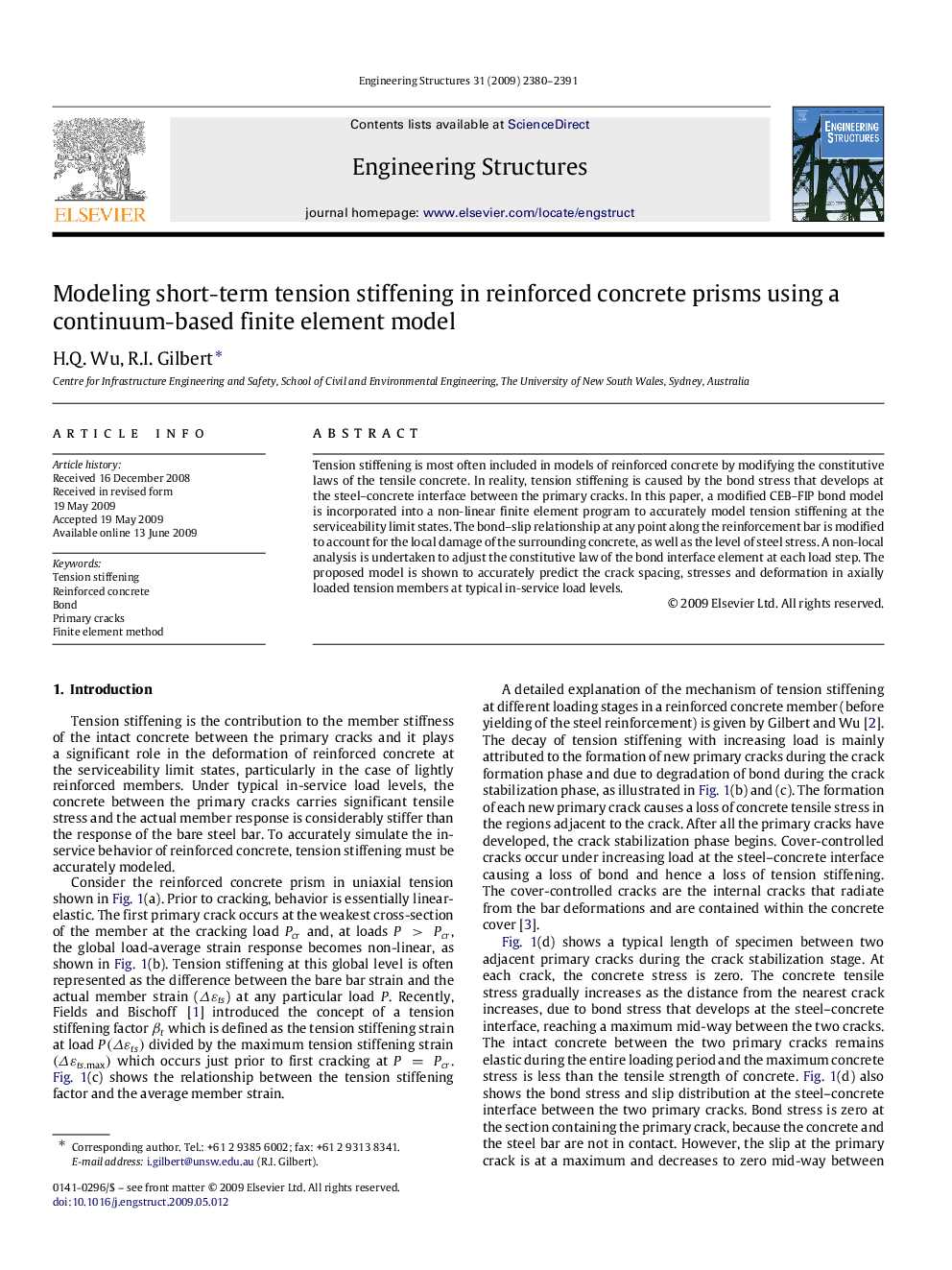| Article ID | Journal | Published Year | Pages | File Type |
|---|---|---|---|---|
| 268383 | Engineering Structures | 2009 | 12 Pages |
Tension stiffening is most often included in models of reinforced concrete by modifying the constitutive laws of the tensile concrete. In reality, tension stiffening is caused by the bond stress that develops at the steel–concrete interface between the primary cracks. In this paper, a modified CEB–FIP bond model is incorporated into a non-linear finite element program to accurately model tension stiffening at the serviceability limit states. The bond–slip relationship at any point along the reinforcement bar is modified to account for the local damage of the surrounding concrete, as well as the level of steel stress. A non-local analysis is undertaken to adjust the constitutive law of the bond interface element at each load step. The proposed model is shown to accurately predict the crack spacing, stresses and deformation in axially loaded tension members at typical in-service load levels.
